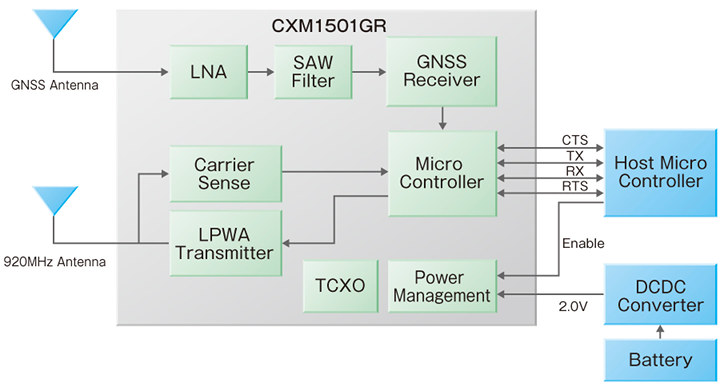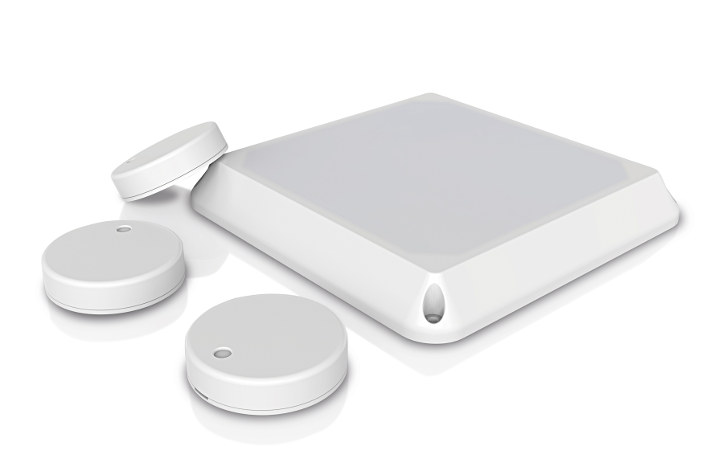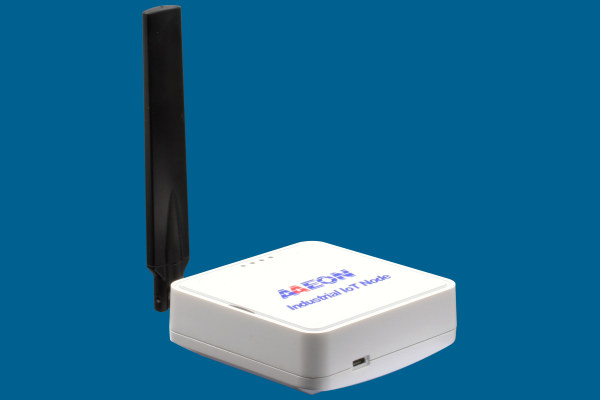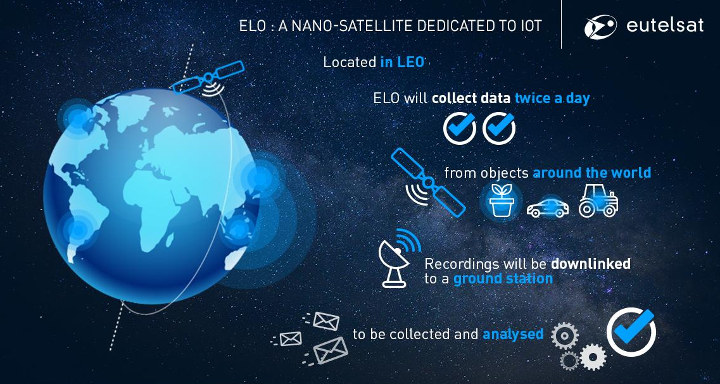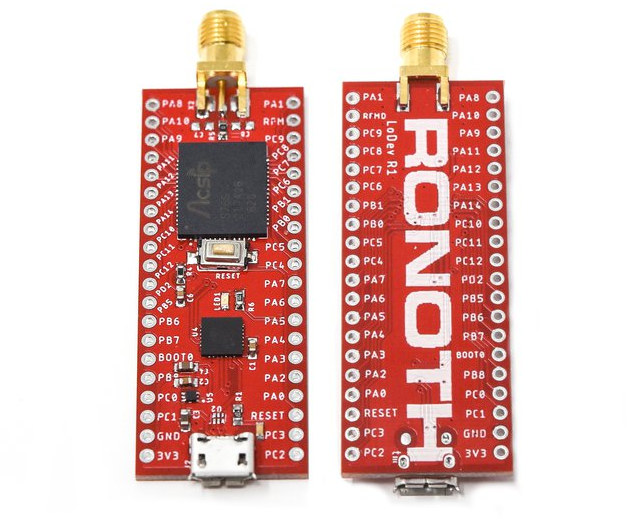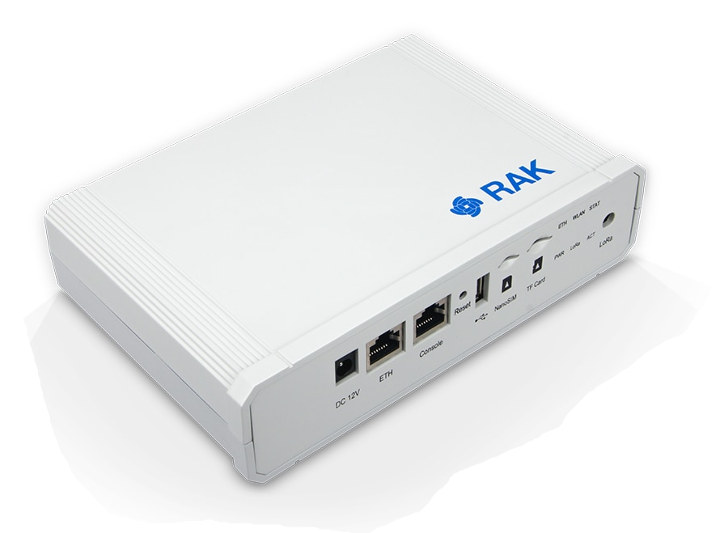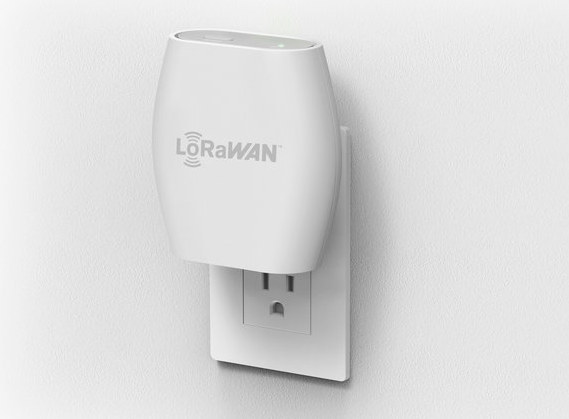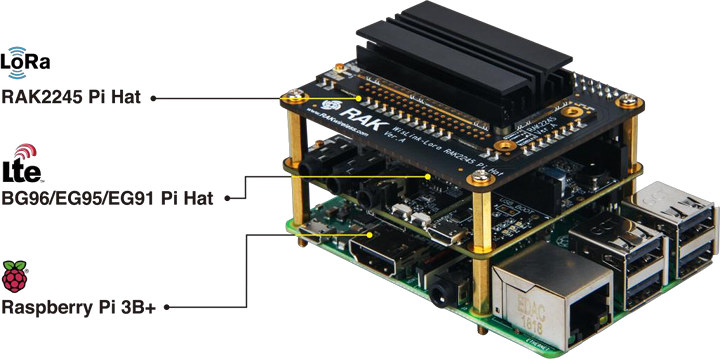While there are many LPWAN (Low Power Wide Area Network) standards, three appear to dominate the news namely LoRaWAN, SigFox, and 3GPP NB-IoT/eMTC. They all offer long range and up to 10-year of battery life enabled by the use of low bitrate which is fast enough to send sensor data. We can now add another LWPAN standard to the list, as Sony has developed ELTRES wireless communication standard suitable for IoT networks, and announced their CXM1501GR ELTRES module with a range of over 100km, even while traveling at 100km/h. Key features and specifications: ELTRES Connectivity Antenna radiated power – 20mW Communication direction – Uplink only Frequency – 923.6 MHz to 928.0 MHz (23-channel frequency hopping) Main modulation system – π/2 Shift BPSK Sub-modulation system – Linear chirp modulation Transmission system – Four repeated transmissions of 0.4 sec or shorter packets Reduction of interference with other systems – CSMA (Carrier Sense […]
Ruuvi Node Open-source Node Solution Combines Nordic Semi nRF9160 Cellular SiP & nRF52840 Bluetooth SoC
Back in 2016, we covered Ruuvi Innovations’ Ruuvitag open source Bluetooth & NFC sensor beacon is based on Nordic Semi nRF52832 Bluetooth SoC. The company has now introduced Ruuvi node, another open source multi-purpose, industrial-grade cellular gateway, environmental sensing, and asset tracking node solution based on not one, but two Nordic Semi chips with nRF91 cellular IoT SiP (System-in-Package) with NB-IoT and LTE M (eMTC) connectivity and nRF52840 multi-protocol Bluetooth 5.0 SoC. It’s an early announcement with the launch of the first pilots of Ruuvi Node planned for Q2/Q3 of this year, so the full specifications are yet to be released. However, thanks to a press release on Nordic Semi website, we do know that Ruuvi Node is meant to be maintenance-free, will include a solar panel for energy harvesting (which mean the included 45Wh battery may never run out depending on the application), several environmental sensors, GPS positioning provided […]
AIOT-ILND01 LoRa Node Comes with AA Battery Holder, Grove Connectors, Optional Enclosure
AAEON specializes in industrial and embedded computing platforms, and usually their products are fairly powerful Windows or Linux based computers, gateways, or network appliances. But in order to provide a complete LoRa solution to system integrators, the company has now introduced AIOT-ILND01 LoRa node powered by STMicro STM32 MCU, and compatible with their AIOT-IP6801IP68 IoT Gateway, as well as other LoRa gateways. AIOT-ILND01 LoRa node specifications: MCU – STMicro STM32L Arm Cortex-M3 MCU @ 32 MHz Connectivity 868MHz/915 MHz LoRa via Semtech SX1276 chipset 1x SMA antenna hole, 1x IPEX antenna hole Sensors – Temperature & humidity sensor, 3-axis accelerometer Expansion – 3x GROVE connectors: 1x UART1 (RS-232/422/485), 1x UART2 (Tx/Rx), 1x I2C Misc – 4x user LEDs, boot select button, 2x user buttons, 1x reset button Debugging – JTAG header Power Supply 5V via micro USB port Battery holder for 2x 14500 rechargeable Lithium-ion battires or AA batteries Dimensions […]
Sigfox Targets Worldwide Coverage with Satellite Launch
LPWAN technologies such as NB-IoT, Sigfox, and LoRa deliver low power, long range communication at low bitrate and can be used for asset tracking, environmental monitoring, water & electricity meters, and so on. The line-of-sight range between the closest gateway and nodes is usually 10 to 20 km, and coverage can be expanded by connecting several gateways to form a network. However, this is not workable in all locations worldwide, so Sigfox plans to launch a Sigfox satellite in collaboration with Eutelsat in order to provide coverage in places like large deserts such as the Sahara desert, the two poles, as well as oceans as explained by Franck Siegel, chief operating officer at Sigfox. This will for instance enable tracking and monitoring of oil platforms and vessels. The press release does not explains much except Sigfox and Eutelsat will test the first Satellite in H2 2019 before the commercial launch […]
LoDev S76S Board Combines STM32, LoRa and Arm Mbed Support (Crowdfunding)
There are already plenty of low power boards with a LoRa radio, but Ronoth offers another option with their tiny LoDev S76S LoRa development board featuring AcSip S76S SiP (system-in-package) with STMicro STM32L073 microcontroller, a Semtech SX1276 LoRa radio, and other components. While most hobbyist LoRa boards are designed to be programmed with the Arduino IDE, LoDev S76S is instead compatible with Arm Mbed. LoDev S76S board specifications: SiP – AcSip S76S system-in-package with STMicro STM32L073 Arm Cortex-M0+ microcontroller @ 48 MHz with 192 kB flash, 20 kB RAM Semtech SX1276 chip supporting global 863MHz ~ 928MHz ISM Bands RF front-end LoRa Connectivity Receiver Sensitivity – down to -146 dBm TX Power – adjustable up to +20 dBm Range – up to 15 km coverage in suburban areas and up to 5 km coverage in urban areas SMA antenna connector USB – 1x micro USB port for programming and power […]
RAK Wireless Launches RAK7258 Indoor LoRa Gateway for $149
RAK Wireless has just launched a new indoor LoRa gateway with their RAK7258 model featuring Semtech SX1301 8-channel digital baseband chip. The OpenWrt gateway supports Ethernet with PoE, 2.4GHz WiFi, optional NB-IoT, LTE Cat M, LTE 4G module, and is fully compatible with LoRaWAN 1.0.2. The gateway supports all main LoRa regions including EU433, CN470, EU868, US915, and AS923. RAK7258 gateway specifications: SoC – MediaTek MT7628 MIPS 24KEc processor @ 580 MHz System Memory – 128MB DDR2 RAM Storage – eMMC flash, microSD card slot Connectivity 10/100 Ethernet with PoE 802.11 b/g/n WiFi 4 with internal antenna LoRa via RAK833 mini PCIe card + RP-SMA antenna Cellular – Extended NB-IoT, Cat M, LTE 4G, supported by default; nano SIM card slot USB – 1x USB 2.0 host port Console – RJ45 RS-232 port Misc – 6x status LED Power Supply – 12V/2A (default) or 42-57V DC PoE Dimensions – 180 […]
The Things Industries Announces $69 Indoor Multi-Channel LoRaWAN Gateway
If you ever see a cheap LoRaWAN gateway, chances are that it is a single channel gateway such as Dragino LoRa gateways that can be purchased for as low as $56. Those will work for your private network, but if others people try to use your gateway, some LoRa nodes will fail to connect. So what you really need is a multi-channel gateway for instance to connect it to The Things Networks. That would be $200 (and up), thank you very much. The IoT can only succeed on a large scale if costs are low enough, so Things Industries decided to design, and has now unveiled a low cost indoor multi-channel LoRaWAN gateway. Meet The Things Indoor Gateway. The Things Indoor Gateway specifications: SoC – Espressif System ESP8266 WiSoC Wireless Connectivity 802.11 b/g/n WiFi 4 via ESP8266 + PCB antenna LoRaWAN via Semtech 1308 chipset with Support for 868 MHz […]
RAK Wireless Introduces DIY Cellular LoRa Gateways, Raspberry Pi & 96Boards Compatible LoRa Modules
RAK Wireless already has a decent offering of LoRa gateways and modules, but the company has been working on two new LoRa gateways, one Enterprise grade model – RAK7249 gateway – based on fully custom hardware, and the other – Pilot Gateway Pro RAK7243 – features a Raspberry Pi 3B+ board with Cellular & GPS connectivity on top of a LoRa radio. RAK Wireless will also introduce three RAK2245/RAK2248 LoRa concentrator modules that can easily be used with boards following Raspberry Pi, or 96Boards IoT edition form factors. RAK7249 DIY Enterprise LoRa Gateway Specifications: Main Board WiFi Module – RAK634 Module SoC – Mediatek MT7628N MIPS processor @ up to 580 MHz System Memory – 128MB DDR2 RAM Storage – 16MB SPI flash Connectivity – WiFi: 2×2 MIMO 802.11b/n/n mPCIe LoRa concentrator card Semtech SX1301 based Standard version with 8 channel Gateway and also support Max.16 channel Gateway. Tx Power […]


